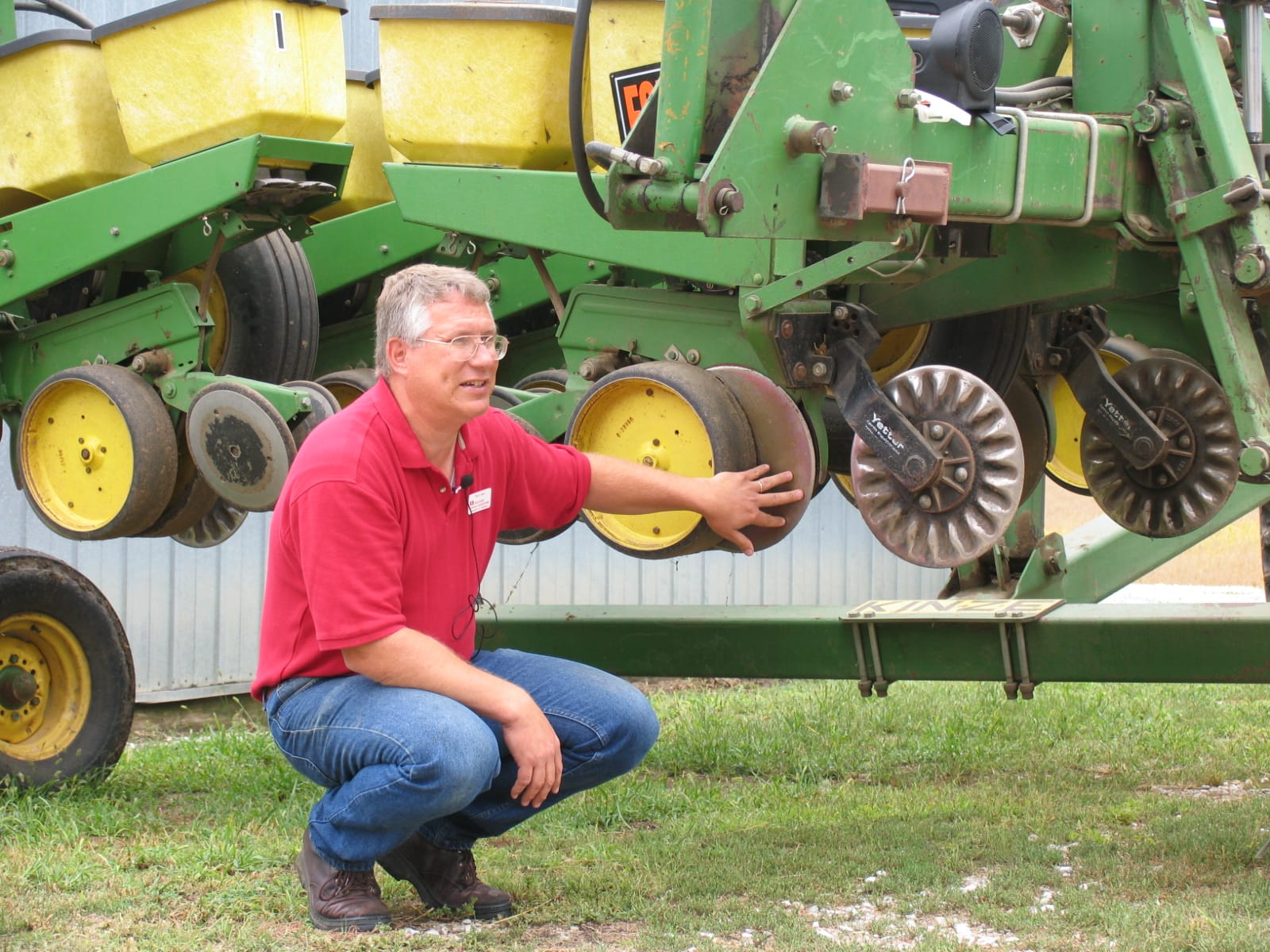By Lura Roti for SDSHC
Seeding and harvest equipment play a large role in farmers’ ability to implement two important soil health principles:
1. Soil cover or leaving enough residue
2. Limiting soil disturbance.
With these principles in mind, University of Nebraska Extension Engineer, Paul Jasa encourages soil health advocates to evaluate equipment performance in the off season, so they have time to make necessary modifications before 2020 planting or harvest.
“Just because it worked fine this season, doesn’t mean things are in prime working condition for next season. Anytime farmers can get into the field to evaluate or learn about strengths or weaknesses of equipment – these are key learning moments. But don’t wait until the planting window opens, or it’s time to harvest to discover the modifications you need to make,” says Jasa who has nearly 40 years’ experience helping producers make farm machinery work for them.
Combine evaluation
Uniformity of residue spread: A combine that spreads residue uniformly across the field during harvest leads to greater success at planting. “In a wet or dry growing season, uniform distribution of residue leads to greatest success at harvest.”
If the combine is not spreading uniformly, it needs a chaff spreader, which is designed to catch the fine residue, like soybean pods and wheat chaff, and distribute them uniformly.
Leave it anchored: No need to spend on a residue chopper. “Leave it anchored and standing so it doesn’t blow away and provides better snow-catch.”
Run the combine cornhead about a foot or two high at harvest to get most of the residue down to the ground yet leave enough residue standing to keep it in place and to catch snowfall. Knife-to-knife snapping rolls or tapered snapping rolls do a good job of processing the residue to make no-tilling into corn residue easier.
Seeder evaluation
If there is an area of a field dry enough, Jasa encourages farmers to take seeding equipment out in early spring and evaluate it to see how well the planter performs.
While considering the principles of soil health, farmers will need to evaluate their seeder’s ability to complete the following four tasks:
- Cut or handle residue to get seed into the ground
- Get seed to desired seeding depth
- Establish seed-to-soil contact
- Close the seed-vee
Below Jasa explains in detail what to look for and suggests modifications if performance isn’t what it should be.
Cut through residue: Disc openers need to be sharp and working together to effectively complete the task of cutting residue to make seed-to-soil contact.
Desired seed depth: Disc openers need to be large enough to maintain a good residue cutting angle – cutting residue 2- to 3-inches deep and penetrate the soil to desired seeding depth.
“As discs wear down, they not only lose their sharp edge, but they lose the ability to cut residue deep enough. This is where testing is important.”
Weight also helps to ensure opener can cut through residue. “In the early days of no-till, a common failure was there wasn’t enough weight on seeding equipment.”
If a field test reveals more weight may be needed, Jasa offers several suggestions for older seeders without automatic downpressure systems.
If a fertilizer tank is on the seeder, simply add water. Consider adding sandbags or other weights.
“The seeder I plant with on our research farm is 25 years old, so I use sandbags to add weight. However, if you’re seeding into fields with more variability, it may be worth upgrading to a seeder with an automatic downpressure system.”
Establish seed-to-soil contact: A seed firmer simply firms the seed into the soil to ensure uniform seeding depth and proper seed-to-soil contact.
“Uniform seeding depth ensures all plants come up at the same time. Without it, the plants that come up behind the rest, never seem to catch up.”
Close the seed-vee: Seeders need to loosely cover planted seed with soil to protect seeds from mice or other field rodents.
If seeding into sticky, clay soil where compaction is a concern, consider a spoked closing wheel to crumble the soil.
Don’t use residue movers: Residue movers don’t help us achieve our goal of minimal soil disturbance. “Don’t focus on making soil warmer and dryer for planting season. That residue blanket will be your crops’ best friend in the summer heat of July and August.
To quote Dwayne Beck, research manager at Dakota Lakes Research Farm in Pierre, “I don’t get paid for what my crop looks like in May or June. I get paid for what my crop looks like at harvest.’”

0 Comments